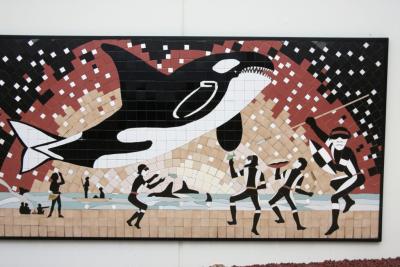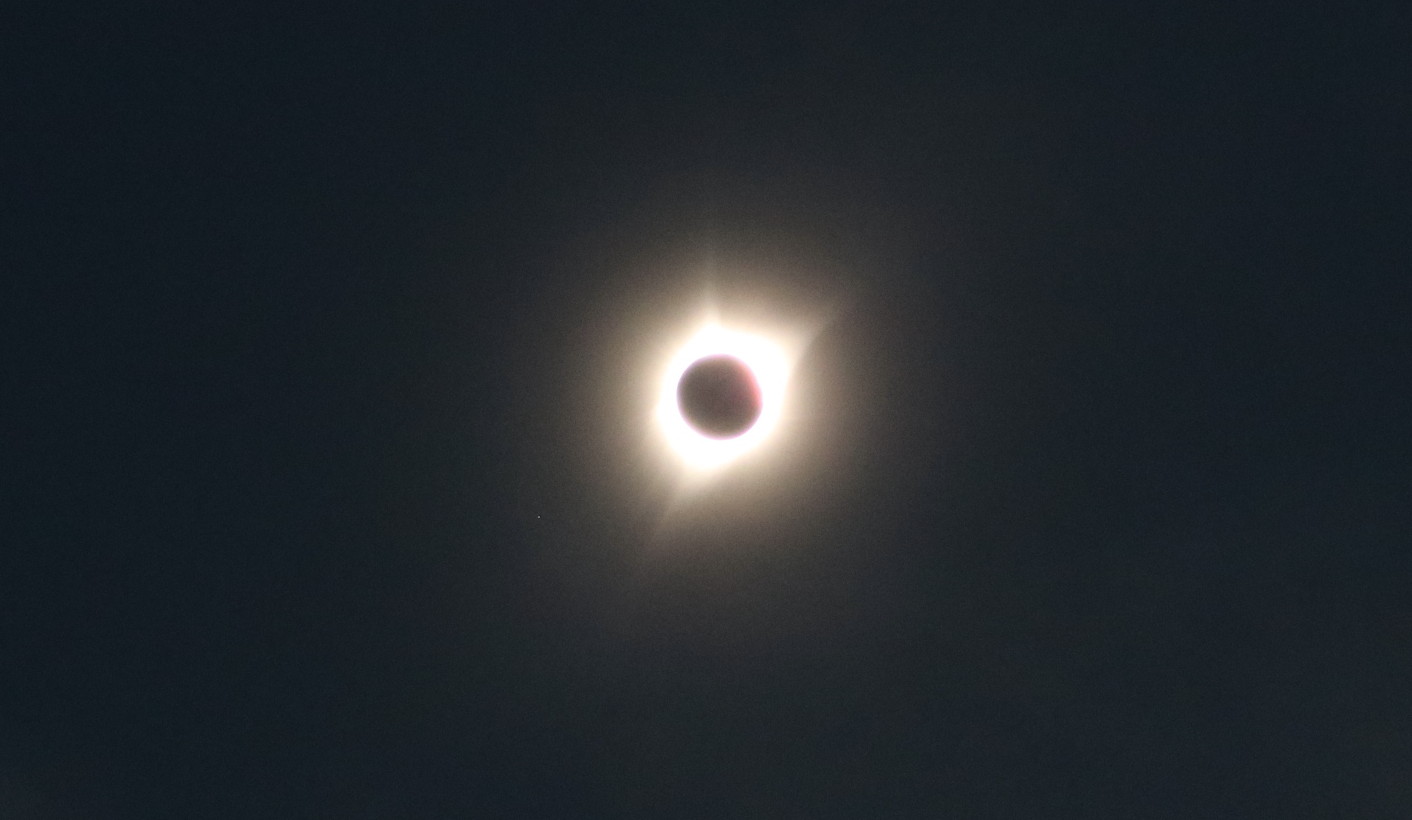Descending to Eden
 At the town of Adaminaby we stopped at the visitor’s center and talked with several natives. They had a statue of the Man From Snowy River, the supposed subject of the poem of the same name. Louise bought a copy of the poem for $1 and read the poem to me as we traveled on through the mountains.
At the town of Adaminaby we stopped at the visitor’s center and talked with several natives. They had a statue of the Man From Snowy River, the supposed subject of the poem of the same name. Louise bought a copy of the poem for $1 and read the poem to me as we traveled on through the mountains.
As we drove on, the road once again descended a steep slope and large vehicles were advised to use lower gears. I down shifted and we started our descent. Just a kilometer or so down the road we came to a rest area and scenic overlook. I pulled in partly to let traffic behind us pass and partly to see what the overlook offered. We got out and walked out onto a platform looking out on the valley of the Snowy River. It was hazy but it still provided a beautiful sight. The valley was greener than any we had seen up to this point. It turns out that the eastern side of these mountains get a pretty steady rainfall. There was a trail to other viewpoints and that led to a trail into the woods. That trail looped back to the first overlook. We spent an hour walking through the woods and viewing the scenery. Before we continued on, we fixed lunch in the campervan and then were back on the road.
Our destination for the day was the town of Eden, a whaling town on the southeastern Australian coast. There is a Killer Whale Museum there and we wanted to see what it had to offer. We arrived too late to enjoy the museum so went to a campground. We booked in for two nights, which would give us the full day in Eden the next day. Leaving the office, Louise asked about the sound she was hearing. I had seen a sign for Bellbird Creek just before we got to town so I guessed it was bellbirds. We parked and hooked up electric then set up the chairs outside to enjoy the show.
The trees were full of birds with a call that sounded just like a bell. More specifically, they sounded like someone hitting a glass with a spoon, a bell-like tink filled the air. It took a few minutes to get a look at one of the birds, they didn’t stay still for long. Some of them were swarming over a couple of brightly colored birds, rainbow lorikeets. Consulting The Birds of Australia, we identified the birds as bell miners. They are a very territorial bird and we watched them take on a kookaburra and some cockatoos. They operated in the same way that small birds take on hawks or crows in the US, swarming the larger stronger bird in a way that makes the large bird flee to get away from the swarming attack.
On Monday morning we walked along an inland lake on a boardwalk. The walk continued on sidewalks along the bluff overlooking the bay at Eden. Along the way there were various signs describing the whaling history of Eden. This whet our appetite for the museum. Approaching the museum we noticed a number of frescos done in the Aborigine style, mosaics, by an Aborigine artist. They depicted the history of the area from the Aboriginal dreamtime before contact with Europeans through to the present day. The artist had provided comments regarding each of the eight frescos. Dreamtime is the time before birth and the time after death in Aborigine culture. In their culture, people return again and again, sometimes in different forms.
The museum building had the date 1938 on its art deco façade. Inside, the exhibits mostly revolved around the whaling history of Eden. Whaling here was based from the shore. There were no large boats traveling far and wide to find whales. When a whale was sighted, a crew would rush to their rowboats and try to harpoon the whale. Local lore held that the Orcas, killer whales, would assist the whalers by steering the whale toward their boats. Then when the whale was harpooned, they would keep it from diving deeply and escaping. Details of how the killer whales did this was presented in diagrams and written accounts. It was said that one of the most revered killer whales, Old Tom, would grasp the rope of the harpoon in his mouth and pull up on the rope to keep the target whale from diving. Old Tom’s skeleton was displayed in the main exhibit hall and sure enough, his teeth on one side of the mouth were shortened and smooth from pulling on the rope.
When the target whale was killed and brought to shore, even before reaching shore, the whaling crew would cut the lips and tongue from the whale and leave it for the killer whales as their reward for assisting in the hunt. This was their pay for a job well done. There were numerous killer whales that were recognized and named by the shape and size of their dorsal fin. Old Tom was one of the most revered and had an unusually long and straight dorsal fin! I thought that was really interesting!
Most of the whaling crews of these days were native Aborigines. They held that the killer whales had been assisting them and their ancestors for ages. They consider the killer whales to be their ancestors who have come back from dreamtime as killer whales to assist them with their hunting. In 1930, Old Tom died and with him, the whaling industry of Eden also died. Today, no one from Australia hunts whales to kill them. Now they hunt whales to be able to share them with the public on whale watching tours.
We enjoyed our visit to the museum. It helped us understand more about the Aborigine culture and the history of the settlement of Australia and lives of early Europeans who settled here.



2 Comments
Recommended Comments
Please sign in to comment
You will be able to leave a comment after signing in
Sign In Now